An Alternative for Escaping the Fully Insured Marketplace and Saving on Employee Health Plan Costs
The purpose of this whitepaper is to introduce a new concept called captives. In addition to defined contribution and private exchanges / enrollment platforms, captives are another concept you’re going to be hearing a lot about. This whitepaper addresses the benefits of captives, how they work, and the type of employers who are good candidates. Additionally, there are options and steps you can take to move in this direction if you’re not a candidate out of the gate.
Often times it feels like you just want to burn down the maze and forge a new path when facing all the complex health benefit decisions you need to make. Well, this is what we’re looking at with the captive option… It’s a whole new path for mid-sized employers!
What is Driving Demand?
Captives are for those insured employers that are frustrated with the insured marketplace, as well as dealing with carrier and plan design changes. They are fed up with health plan increases that have no claims data to justify the rising rates, as well as the lack of transparency into what is driving their costs.
There are many different questions out there from employers who are looking to escape the fully insured marketplace, such as: What are the true costs of the plan? What are we paying for? We’re in this large pool; if we do wellness does it really have a positive impact?
Subsidizing Carrier Rating Pool
Many of the employers that are candidates for captives have had a very good experience historically. Often they will think it’s exciting to get a no-rate change, and that it’s a homerun. However, they may actually be a perfect candidate for a captive arrangement. This is due to subsidizing other employers in that fully insured risk pool. Captives provide the opportunity to get out of that pool and stand on your own. Other benefits include:
- Health Care Reform Fees: Cost advantages can be achieved through savings on some of the fees. While we can’t escape all of them with a captive, there are certain healthcare reform fees and state taxes that you can avoid if you move into a captive arrangement.
- Carrier Margins / Administration Load: Also additional cost advantages are gained with captive solutions by eliminating the carrier margin. This lowers the administrative cost, or the load, to administer the plan.
- Self Funding – Controlled Risk: Captives provide a way to control the risk. We’ll talk more about what that really means when we address self funding below.
- Rate Stability: We’re looking for rate stability over the long term, and this is the main benefit provided by becoming self funded with a captive.
Self Funded– What Does it Really Mean?
There are a lot of different acronyms out there, but basically this is a package that allows you to become self funded. There are multiple options in the marketplace.
- Third Party Administrator (pays claim / runs plan): Basically you’re breaking apart the pieces and then bundling them back together. A Third Party Administrator (TPA) is going to be the entity that will pay the claims and administer the plan.
- Provider Network (physician, clinic and hospital discounts): You’re still going to need to have a network. When you go see a doctor or have an event at a hospital, you’re not going to want to pay billed charges. You’re going to want to pay discounted charges that come from having a network. The network will also protect you from being balanced billed.
- Pharmacy Benefit Manager (RX discounts): You’re also going to want to have a PBM, i.e. a pharmacy benefit manager. PBMs are organizations that secure discounts on prescription drugs.
- Stop Loss Protection: The key with a captive program is how the stop loss is arranged.
- Specific Stop Loss (SSL)– 25K to 75K (Employer risk per member): Specific stop loss is basically the maximum risk that an employer takes per covered life under the plan. As an example, a self funded group with 150 lives and a $60,000 risk means the maximum they pay out of their own pocket the first $60,000 of any claim in a calendar year. Then the rest is ceded to the reinsurance carrier. For some groups that are taking that first step into self funding, that may be too big a risk. As a solution you can actually buy down the specific to $25,000. This is simply an example of how you can control your risk on large claims.
- Captive Stop Loss – SSL up to 250K (Captive risk per member): The second layer of stop loss is where the captive comes into play . You have your company’s specific risk up to $25,000, and then the captive takes the risk from $25,000 up to $250,000. As a result if you have a claim that goes to $50,000, you pay the first $25,000 and the captive picks up the next $25,000.
- Reinsurance Over 250K to Separate Insurance Carrier: You want to cede any substantial large claims to a reinsurance carrier, and the captive as a whole buys protection. Then if you have a large claim, the first $25,000 is your responsibility, and the next $225,000 would be the captive’s responsibility. Anything above $250,000 is ceded to a reinsurance carrier.
- Captive Surplus is Shared with Individual Employers Based on the Performance of the Captive and Individual Employers: Ideally if your captive has a surplus at the end of the year, the captive can actually distribute reserves back to the members. Conversely those dollars can stay in the captive to build up a reserve to take care of future claims.
Who are Captive Candidates?
- 75 – 300+ Employees
- Stable Workforce
- Good Demographics
- Strategic Long Term Buyer: Moving into a captive or a self funded arrangement is not something that you just try out for a year. It is a commitment. It is something you need to go into with an understanding that you’re moving down this path because there are other things than just pure cost savings you are looking for, such as transparency, access to claims data, and more predictive modeling.
- Fully Insured and Frustrated with Lack of Control and Lack of Access to Data
- Historically Good, Stable Claims Experience and Rates
- Focused on Risk Management with Wellness Intent: Lastly the employers that get into the captive are going to be focused on risk management, and they are good performing groups of individuals. Then we add a wellness program on top to make sure we’re controlling the risk on an on-going basis as well. A lot of the plans that we’re looking at in these captives are implementing an engaged/wellness strategy.
Next Steps
- Interested? If you’re interested in talking more about the captive option, we recommend a deeper dive into the program starting with a qualification discussion. Captives may sound like a great option for your organization, but you may not be a candidate. You have to qualify in order to get into the captive. On the other hand if you’re not a candidate right now, you may want to work toward it, and this is all part of the discussion. If you do qualify you will want to get a proposal. We would go into the full details of the plan, including an implementation timeline.
- Not A Captive Candidate? About half of the groups that apply are not candidates out of the gate. It is very selective, and you want it to be that way if you’re in that captive. You want to have as much good risk as you can going into that captive. If you’re not a candidate there are a couple of options that can help you improve your profile, and you can start working toward a strategy to help your group qualify.
There are a lot of options out there, and you are going to continue to hear more and more about captives. Each group is unique, and the captive option is definitely worthwhile to consider when you’re looking at your options going forward.
If you have any questions or would like to a schedule a meeting, please contact us.
| Download this White Paper | The Partners Group Captive Healthcare Program |
| Click image to download flyer | Click image to download flyer |
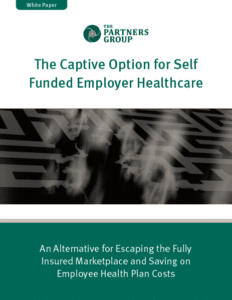 |
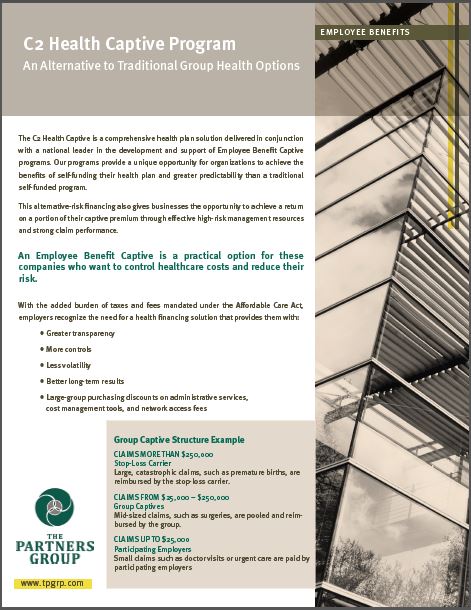 |
Click on the images to read the White Papers.
| How Pharmacy Benefit Management Programs (PBMs) Can Help Save Significantly | How Wellness Programs Can Lead to Better Bottom Lines through Healthier Employees |
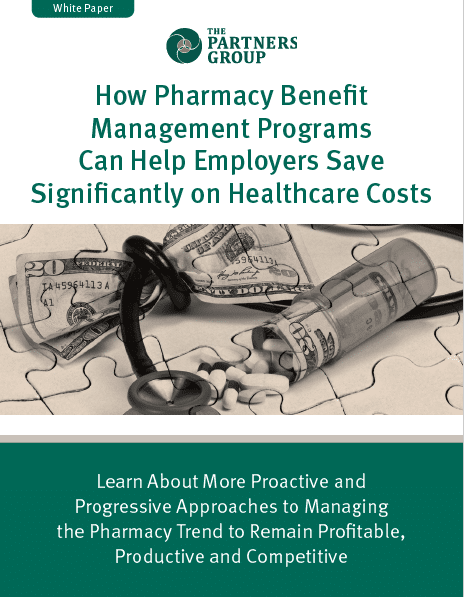 |
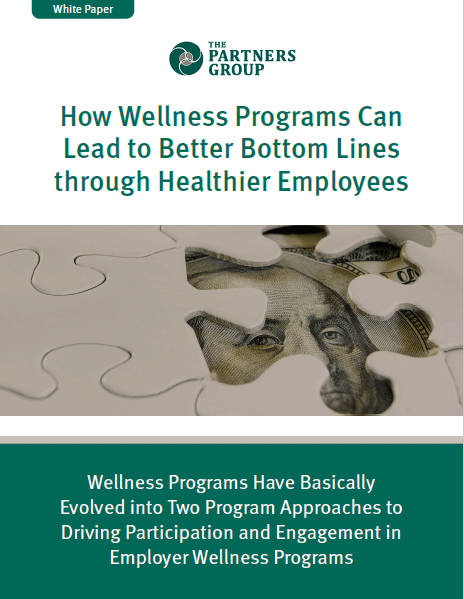 |
| The Public Health Exchange Progression to Small Employer & Private Exchanges |
Defined Contribution Health Plans |
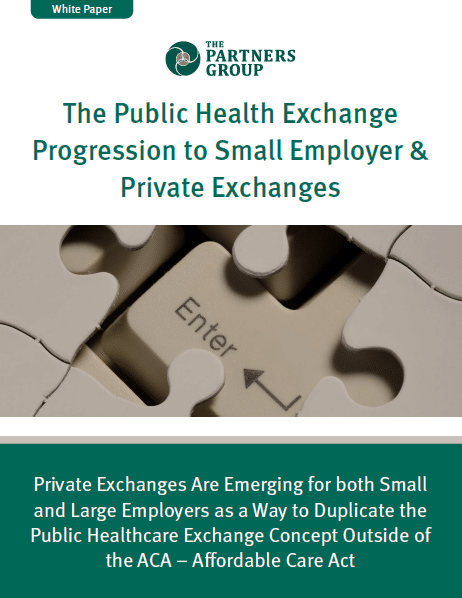 |
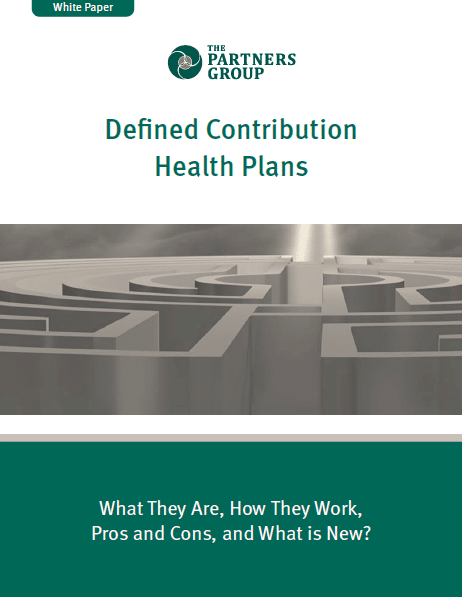 |


